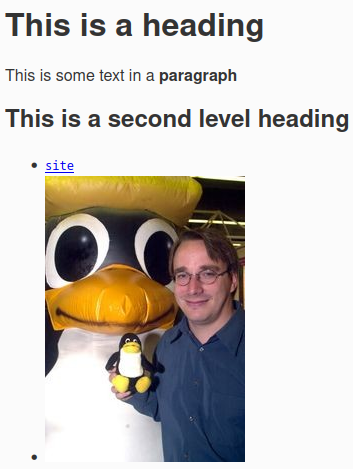```{r}
#| label: readin-csv
#| code-line-numbers: false
#| eval: false
# regular comment, not a hash pipe
wine <- read_csv("wine.tsv")
```Quarto
Literate programming
University of Luxembourg
Tuesday, the 4th of March, 2025
Learning objectives
You will learn to:

- How to structure files and folders
- Use relative paths and RStudio projects
- Use the markdown syntax
- Create Quarto documents
- Render to the output format you want
- Use RStudio interface to
- Create your documents
- Insert R code
- Build your final document
Organize your files
Absolute paths are NOT portable

Relative paths are
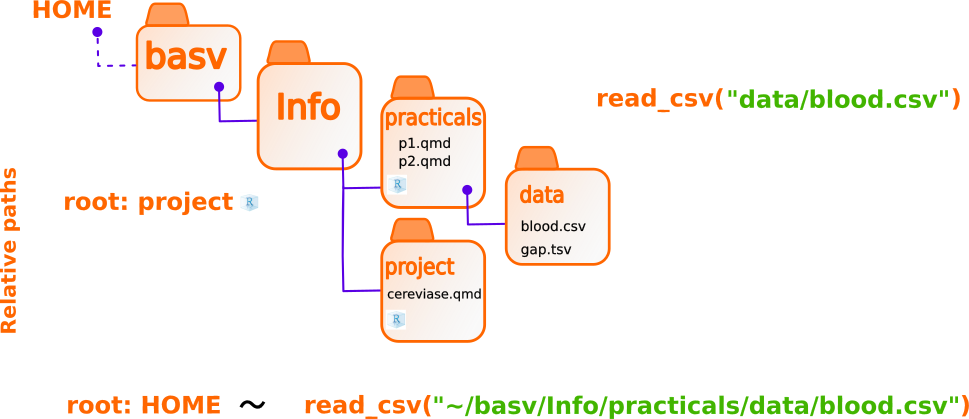
RStudio projects
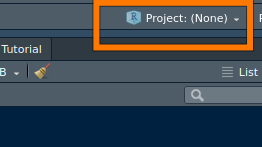
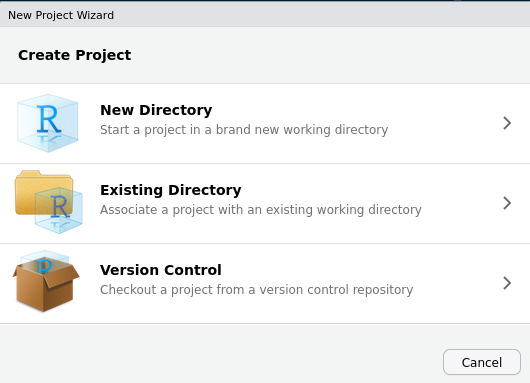
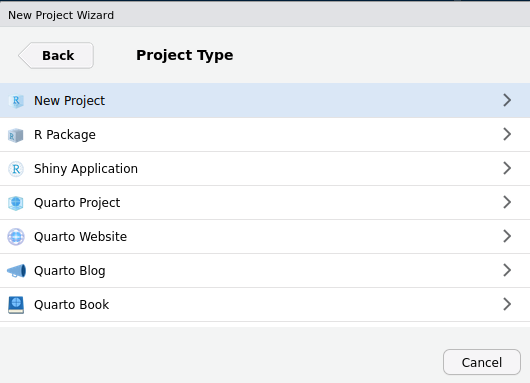
Create the practicals RStudio project
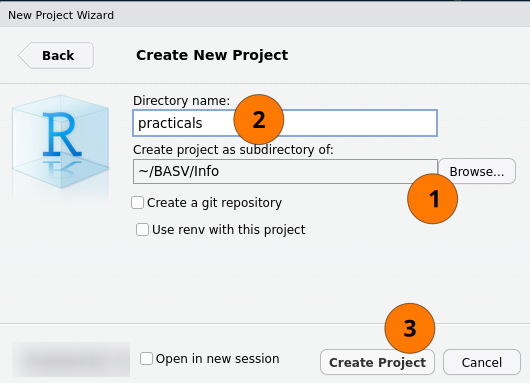
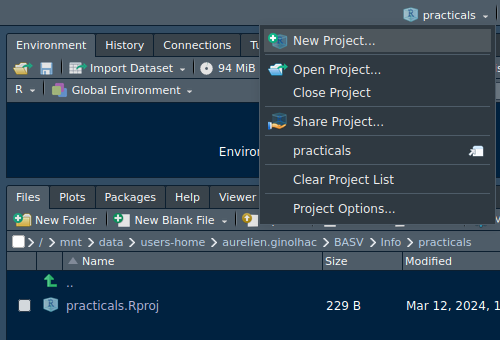
Typical flow of data
Source data ➡️
- Experimental data
- External data sets
- Manually collected data and meta data
Intermediate ➡️
- Derived data
- Computation
- Manual curation
- Tidy data
Analysis ➡️
- Exploratory analysis
- Statistical models
- Hypothesis testing
Manuscript ➡️
- Can you reproduce your work?
- All numbers
- Summaries
- Images
One workflow
- No editing of data at any step
- All code needed to reproduce from one ingestions to manuscript coded and repeatable
Literate programming is the practice of mixing code and descriptive writing in order to execute and explain a data analysis simultaneously in the same document.
— William Landau Developer of {targets}
For a bioinformatician, pure programming is barely happening, we need reports/websites where content and formatting are disconnected
Even better to separate content and rendering, outsourced to continuous integration/development.
Source: {targets} user manual
Rmarkdown
Predecessor of Quarto. Files are .Rmd.
Version 1 in 2016, the idea was to have text and code in one document, execute code and let the final markdown converted to different formats by pandoc.
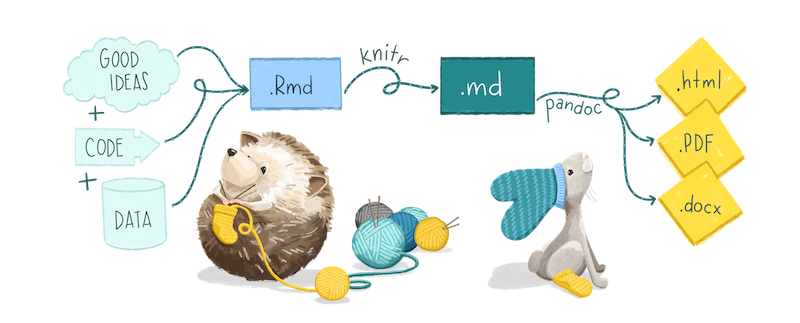
Credit: Artwork by Allison Horst
Quarto
Extended Rmarkdown. Languages and IDE agnostic

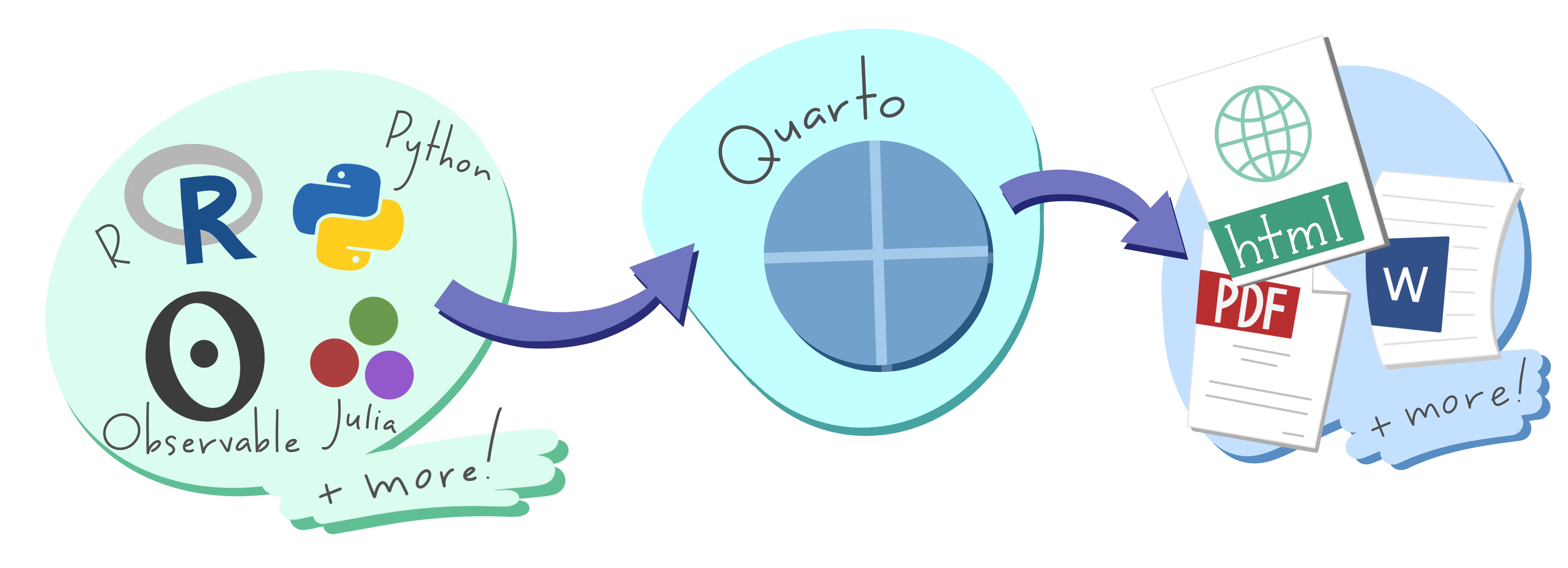
Why use Quarto ?
- Write detailed reports
- Ensure reproducibility
- Mix programming languages (passing along variables)
- Export a single (
.qmd) document to various formats (PDF, HTML…) - Keep track of your analyses
- Comment/describe each step of your analysis
- Quarto extensions
- Text file that can (should) be managed by a version control system (like git)
Markdown
- Lightweight markup language with a simple syntax
HTML
<!DOCTYPE html>
<html>
<body>
<h1>This is a heading</h1>
<p>This is some text in a <b>paragraph</b></p>
<h2>This is a second level heading</h2>
<ul>
<li><a href="http://exa.com"><code>site</code></a>
<li><img src="https://images.computerhistory.org/revonline/images/500004391-03-01.jpg?w=200">
</ul>
</body>
</html>Common text formatting tags
Headers
- 6 levels are defined using
#,##,###… - From BIG to small
Links and images
http://example.comis auto-linked[site](http://example.com)for alternative description
Verbatim code (no computation)
Use the 140 language syntax pandoc knows
codewith backticks (`code`)- Triple backticks are delimiting code blocks:
```
This is *verbatim* code
# Even headers are not interpreted
```rendered as:
This is *verbatim* code
# Even headers are not interpretedIncluding code to execute
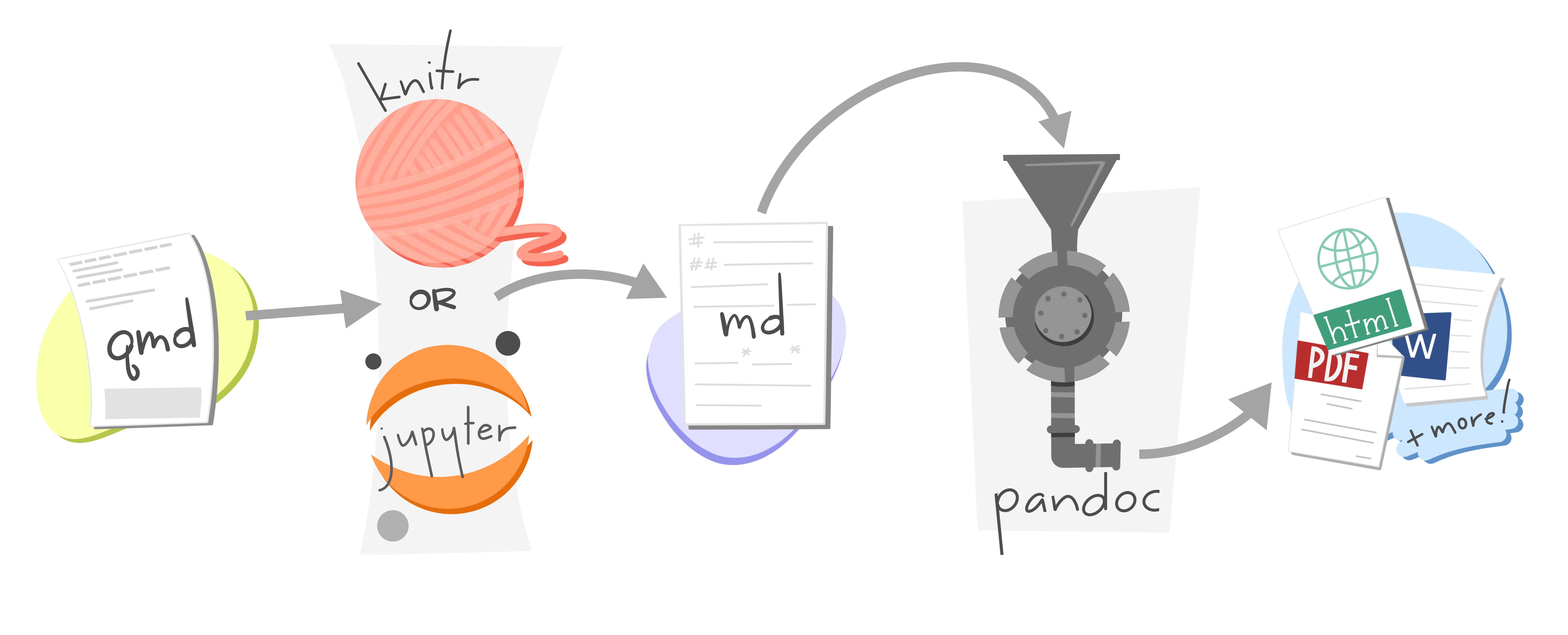
Computation
- In a fresh and clean session
- Chunks are evaluated
- Sequentially from top to bottom
Example for knitr
- Extracts chunks
- Interpret/Run them
- Formats results as markdown
- Reinject in the document (MD)
Pandoc
- Converts markdown to the desired document
- HTML
- Word
- EPUB
- …
Quarto document: Structure
YAML header
- Document common variables:
- title, date, author, …
- Define format and its specific options
- Use TabTab for autocompletion
Free text in Markdown
- Markdown syntax to write your descriptions, remarks
- Literate programming
Code chunks to be interpreted
- Outputs (tables/plots) are inserted below each
knitrforjupyterforQuartoNotebookRunner.jlpackage forjulia- Native support for
Observable
Qmd creation: step 1
Under File, pick Quarto Document
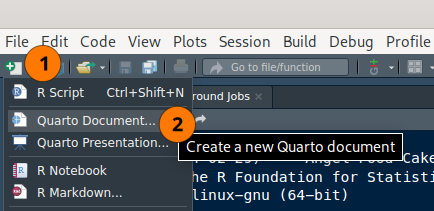
- Optionally fill in some header variables
- Choose the output format (can be changed later)
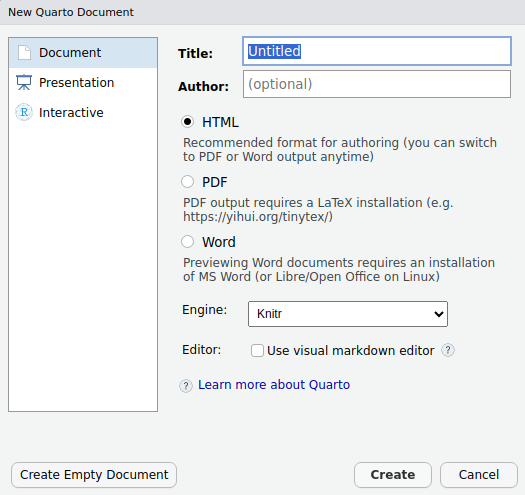
Render Quarto documents
code chunks
Insert a chunk
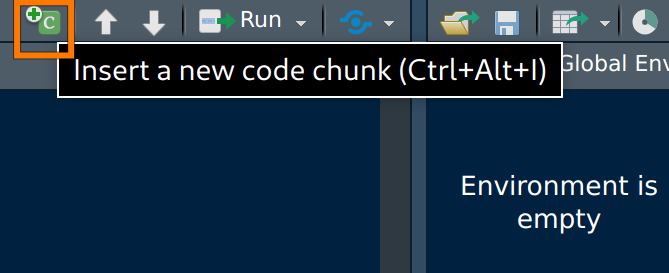
Basic Markup
- Delimited by triple backticks tags (
```) - Engine evaluating the code in curly braces
- Options in hash pipe:
#|- Label of chunk (optional)
- Show/hide code
#| echo: true - Evaluate or not
#| eval: true - Figure size (inches)
#| fig-width: 9 - …
Inline R code
Integrate small pieces of code
Use backticks (`) followed by the keyword {r}:
`{r} some code`
Example
1 + 1 = `{r} 1 + 1`
=> renders as 1 + 1 = 2 .
More useful:
swiss dataset:`{r} nrow(swiss)` rows
=> renders as swiss dataset: 47 rows.
Popular output formats
HTML
- Fast rendering
- No need for extra install
- Single file
- Requires \(\LaTeX\), have a look at the TinyTeX package for minimal install
Word (docx)
- Widely used
- Editable
- Collaborate with people not using Quarto
Output examples 1/2
HTML
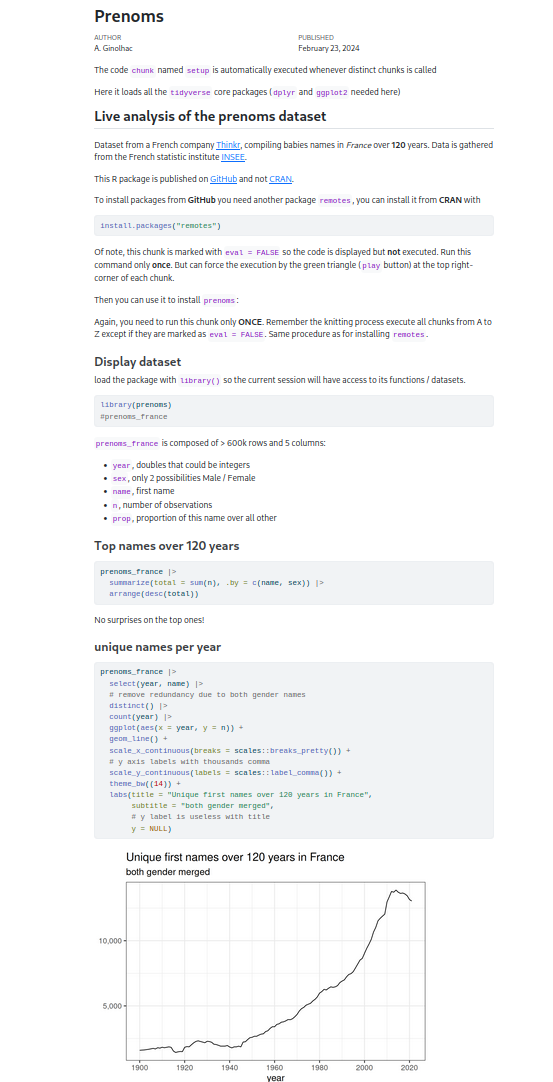
Word
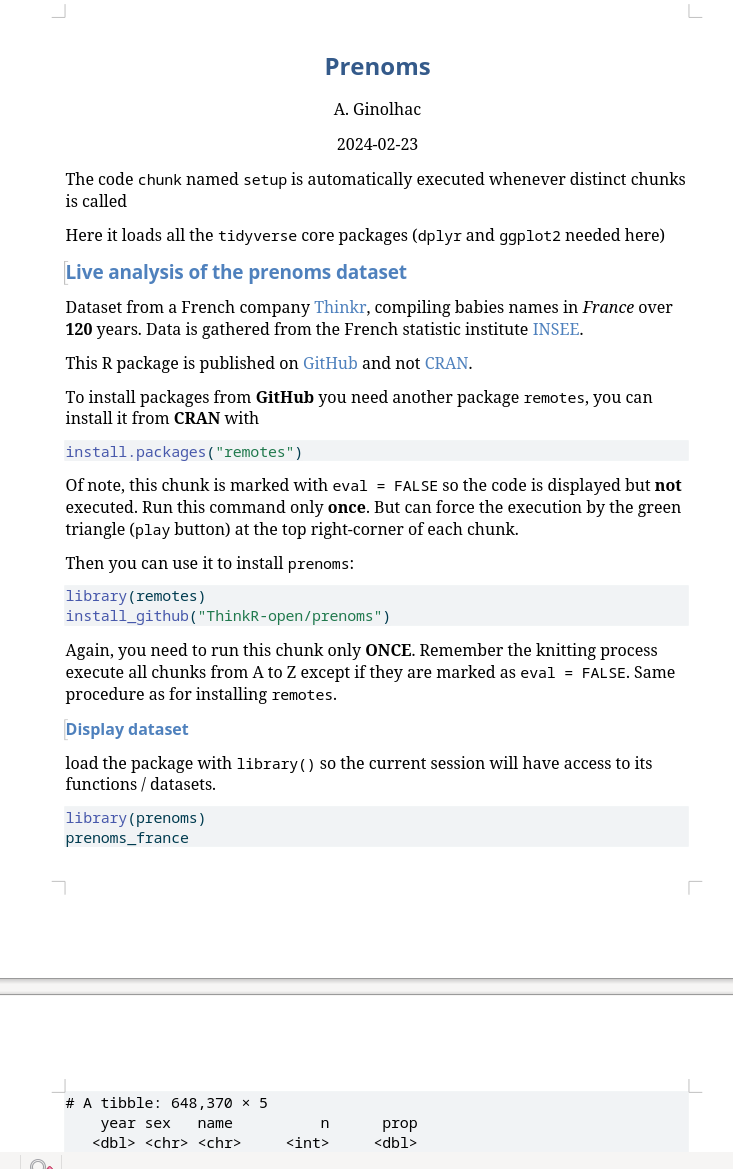
Output examples 2/2
Typst
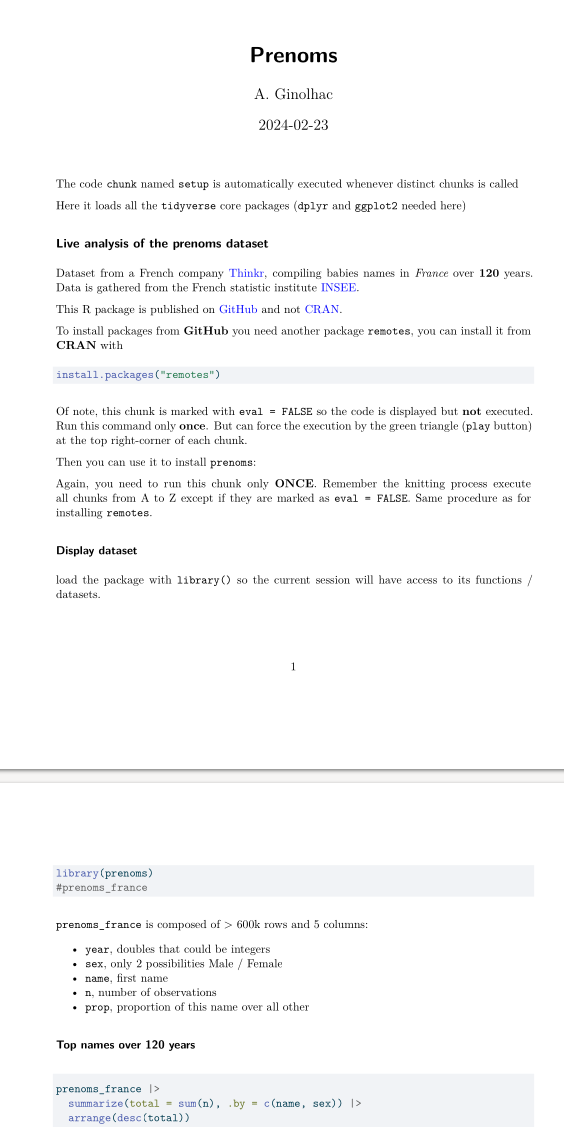
PDF (LaTex)
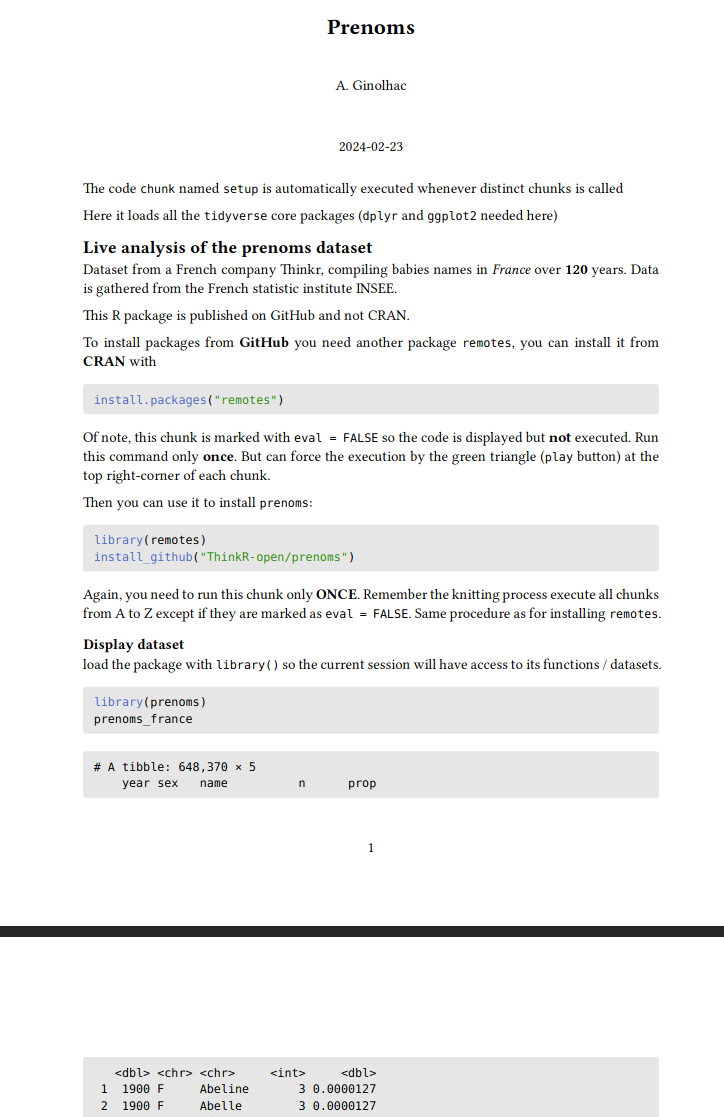
Basic tables
Created from scratch
| Dataset | # rows | Description |
|---|---|---|
| swiss | 47 | Swiss Indicators |
| datasaurus | 1842 | 13 dataset of same mean |
Tables with knitr::kable()
| Province | Fertility | Agriculture |
|---|---|---|
| Courtelary | 80.2 | 17.0 |
| Delemont | 83.1 | 45.1 |
| Franches-Mnt | 92.5 | 39.7 |
| Moutier | 85.8 | 36.5 |
| Neuveville | 76.9 | 43.5 |
Equations using \(\LaTeX\) syntax
How to add equations
Enclose in
$for in-line equations$a^2+b^2=c^2$renders as \(a^2+b^2=c^2\).Double (
$$) for separate equations.
$$G_{\mu v}=8 \pi G (T_{\mu v} + \rho _\Lambda \ g_{\mu v}) $$renders as:
\[G_{\mu v}=8 \pi G (T_{\mu v} + \rho _\Lambda \ g_{\mu v})\]
Before we stop
You learned to:
- Use relative paths in RStudio projects
- What is
Quarto(qmd) - Basic syntax of
Markdown - Separate content from rendering
renderto different output formats
Acknowledgments 🙏 👏
- Mine Cetinkaya-Rundel
- Xie Yihuie
- Alison Horst
- Hadley Wickham
- Christophe Dervieux
- William Landau
- Artwork by Allison Horst
- Jenny Bryan
Thank you for your attention!

